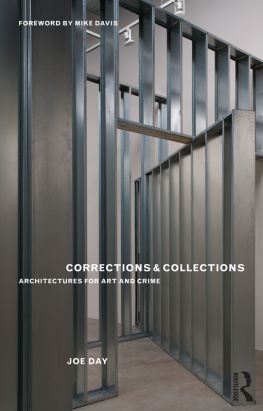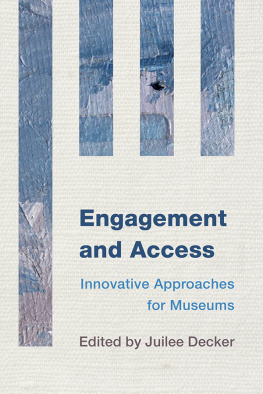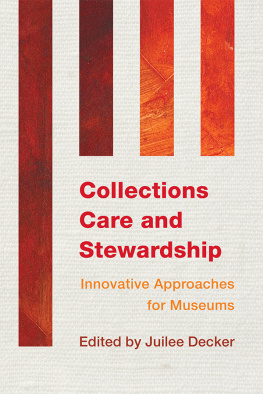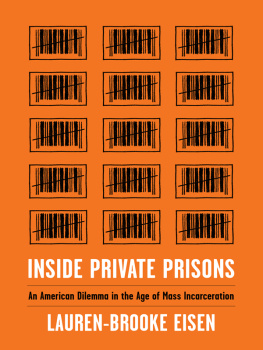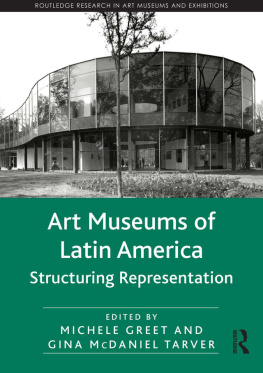CORRECTIONS AND COLLECTIONS
CORRECTIONS & COLLECTIONS
ARCHITECTURES FOR ART AND CRIME
JOE DAY
FIRST PUBLISHED 2013 BY ROUTLEDGE
711 Third Avenue, New York, NY 10017
Simultaneously published in the UK
by Routledge
2 Park Square, Milton Park, Abingdon, OXON OX14 4RN
Routledge is an imprint of the Taylor & Francis Group, an informa business
2013 Taylor & Francis
The right of Joe Day to be identified as author of this work has been asserted by him in accordance with sections 77 and 78 of the Copyright, Designs and Patents Act 1988.
ALL RIGHTS RESERVED
No part of this book may be reprinted or reproduced or utilised in any form or by any electronic, mechanical, or other means, now known or hereafter invented, including photocopying and recording, or in any information storage or retrieval system, without permission in writing from the publishers.
PUBLISHERS NOTE
This book has been prepared from camera-ready copy provided by the author.
ACQUISITION EDITOR Wendy Fuller
EDITORIAL ASSISTANT Laura Williamson
PRODUCTION EDITOR Siobhn Greaney
COVER Michael Asher, Installation View,
Santa Monica Museum of Art
Photograph by Grant Mudford, 2008
LIBRARY OF CONGRESS CATALOGING IN PUBLICATION DATA
Day, Joe, 1967
Corrections and collections : architectures for art and crime / Joe Day.
pages cm
Includes index.
1. Art museum architectureUnited States.
2. PrisonsDesign and constructionUnited States. 3. Architecture and societyUnited States. I. Title.
NA6696.U6D39 2013
725.60973dc23
2012048824
ISBN 978-0-415-53481-9 (hbk)
ISBN 978-0-415-53482-6 (pbk)
ISBN 978-0-203-78603-1 (ebk)
TRADEMARK NOTICE Product or corporate names may be trademarks or registered trademarks, and are used only for identification and explanation without intent to infringe.
Every effort has been made to contact and acknowledge copyright owners. The publishers would be grateful to hear from any copyright holder who is not acknowledged here and will undertake to rectify any errors or omissions in future printings or editions of the book.
BY MIKE DAVIS
MILLIONS OF TOURISTS, guidebooks in hand, have trooped through Venices Palazzo Ducale, admiring Titian, the Tintorettos, Palladio and Veronese, but not realizing the ruthless power incarnated in the building until they have crossed over the Bridge of Sighs and explored the ghastly dungeons. For half a millennium, as the Palazzo was continuously built and rebuilt, the rulers of the Republic of St Mark insatiably collected both high art and prisoners within its walls.
In 1923, shortly after Mussolinis Squadristi marched on Rome, the derelict Palazzo was formally transformed into a museum. Rather miraculously a century or more of graffiti was left on some of the cell walls, comprising a collection perhaps unique in Europe. A defiant Viva Malatesta! dates one of the last of Palazzos prisoners an anarchist arrested around the turn of the century.
Prison within a museum; museum within a prison. The curation of men, the incarceration of art. Fruitful or just clever mirror images? Joe Day takes us farther up-river with such inverted analogies than most of us would have conceived possible.
Indeed, I must warn the reader that this remarkable book a brilliantly original reconceptualization of (late?) postmodernism that has no need to quote Foucault or Baudrillard will rattle some of their categories. At least that was my experience. I opened Corrections and Collections with the anticipation that I would savor provocative comparisons between the architectural geometries of modern museums and prisons, but I did not expect the distinctions between the two to blur so quickly.
As Day makes overpoweringly clear, this is not a simple confusion arising from the generic characteristics of contemporary institutional architecture. Prisons and museums share profound and troubling characteristics that transcend more superficial affinities with other monolithic design schemes like hospitals, administrative centers, and university architecture. Indeed, what begins as analogy becomes a systematic isomorphism that finally has to be recognized as a strange species of unexpected identity.
The Mobius Strip, to recall its formal definition, is a non-orientable surface with only one side that tricks our eyes into believing that there must be two sides. To the obvious objection that whatever their similarity in design, prisons and museums have completely different programs, Day confronts us with their disturbing phenomenological equation. Like the strange topology that August Mobius discovered in 1858, one will search in vain for the authentic boundary or edge between our societys two most favored building projects. Days thesis, refined to a single sentence, is that the warehousing of surplus people and over-valued objects on an unprecedented scale is the expression of a single social logic.
In Southern California, as he shows in fascinating but sometimes frightening detail, this logic has created an extraordinary landscape. Along the west-east axis of the Santa Monica mountains and at the base of the foothills that link them to the San Gabriel mountains, the great oil, railroad and real-estate dynasties of the region monumentalize themselves in a corridor of in-your-face-Manhattan art mausoleums: the Getty Villa, the Getty Center, the UCLA Hammer, LACMA, MOCA, Norton Simon, and the Huntington.
Their counterpart is a carceral solar system that revolves around Downtown Los Angeles central jail complex the largest in the world with 25,000 inmates a few blocks from MOCA and the latest Broad Museum. In the nearest orbits are more jails, followed by a dozen state and federal prisons in LAs suburban and desert peripheries. As Day points out, this is our most eloquent answer to the urban employment crisis.
The design strategies that emerge from this sinister conflation of collection and punishment correspond to a hybrid of aesthetic minimalism, traffic management, and neo-Benthamism. Thus jaded correctional officers sit in front of monitors watching stored human objects masturbating, screaming or simply vegetating, while self-conscious museum visitors feign sophisticated appreciation of more and more contrived art installations while a voice inside their heads asks, This piece of shit is worth $15 million dollars?
Even if it violates the precision of its mathematical definition, the concept of nonorientability seems powerful in understanding Days analysis of these mirrored and alienated phenomena. The coevolution of prisons and museums corresponds to the radical absence of orienting hopes or emancipations.

To Seduce or Subdue?
To find the future, listen for acronyms. Abbreviations are economic bellwethers, and where there is spending, proper names often must pay. Over the last twenty-five years, the California Department of Corrections has redesignated all thirty-three of its state prisons, or CSPs, with two to five letter acronyms, adding to an already impressive list of abbreviations used to run those facilities, such as AD-SEG, SHU, LWOP, 270s, and J-CAT.Bay became SQ, FOL and PBSP, respectively, mere nodes in a vast punitive archipelago. In the same years, most major museums trademarked cute, populist contractions of their names as brand logos. Long a redoubt of proper names, especially those of artists and connoisseurs, the art press now features a proliferation of MoMAs and MOCAs, Dias and MAKs, ICAs and CACs.
CORRECTIONS & COLLECTIONS explores and connects two massive expansions in our built environment. Prisons and museums led the last great wave of American urban renewal. Before the many new housing, sports, education and transit projects of the last quarter century could take shape, civic space in the United States was first cordoned into zones of cultural and societal transgression, and then reapportioned to lure new inhabitants while containing the old. After two centuries of incremental growth, the number of correctional facilities and museums in the United States tripled in twenty-five years, from roughly 600 prisons and 6,000 museums in 1975 to more than 1,800 prisons and an estimated 18,000 museums by 2000. In both, this multiplication only begins to describe the expansion, taking into account neither the many additions to existing buildings, nor the escalating size of new ones. Neither trend has slowed in the new century.
Next page
